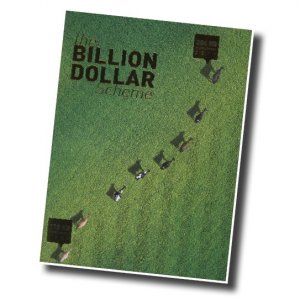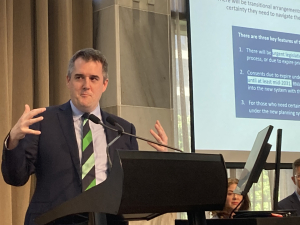A new book, The Billion Dollar Scheme, launched this month at LIC, celebrates the history and impact of artificial breeding on the dairy industry, marking 50 years of the LIC Sire Proving Scheme.
Research into AB began in New Zealand in the 1930s but not until 1950 was a commercial service introduced – then the rate of uptake by Kiwi farmers was extraordinary, says LIC chief executive Mark Dewdney. In that first year, 3603 cows were inseminated. Within seven years this had grown to 252,000 cows and it kept on growing until today when about 3.3 million cows are artificially inseminated.
“It’s easy to breeze over those numbers but think for a minute about the mindshift which accompanied it,” Dewdney says. “Farmers were asked to go from the tried but not always true bull, to a straw of semen.
“They were asked to trust that semen could be diluted yet still be fertile. They were asked to trust that this new technology would improve their herds. And it did.”
Farmers responded positively because the concept and the potential were sold to them by people who understood the industry. They were farmers’ people, Dewdney says.
But having the technology to distribute semen from elite bulls demanded a scheme which would identify the elite from the ordinary, and a distribution system to ensure all farmers, no matter where they were located, could have access to the same elite animals.
Jim Dougherty, a Hawke’s Bay dairy farmer, first came up with the idea of a ‘sire proving scheme’. The idea was picked up by the Wellington-Hawke’s Bay Livestock Improvement Association and the challenge to make it happen was put into the capable hands of people such as Pat Shannon, Olive Castle and Brian Curson.
“The rest, as they say, is history, and for the first time the story of the LIC Sire Proving Scheme, and artificial breeding, has been developed into the publication we celebrate today,” says Dewdney. The LIC Sire Proving Scheme began in 1961.
The book records what can be achieved through collaboration and closeness to dairy farmers – the secret of LIC’s success over 100 years, Dewdney says.
“Delivering good for the industry is an essential by-product of everything we do.” For 50 years the LIC Sire Proving Scheme has made $17 billion dollars for the New Zealand economy.
Dewdney says during each of those years LIC has spent millions of dollars on a scheme that benefits every dairy farm – “one of the best examples of industry good and a legacy for future generations of dairy farmers.”
LIC communications manager Clare Bayly wrote the book. Those present at the launch included primary production select committee chairman Shane Ardern, National, and deputy chairman Damien O’Connor, Labour.
















